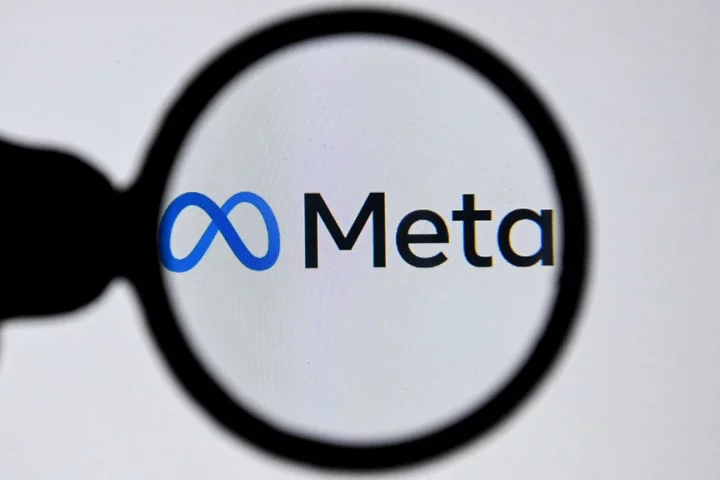
Meta sued over ‘open secret’ of ‘pursuing’ and signing up millions of underage users
Facebook‘s parent company Meta disabled only a small fraction of the over one million reports it received of underage users on Instagram since early 2019, a lawsuit filed by 33 US states reportedly said. The newly unsealed legal complaint accused the tech giant of carrying an “open secret” that it had millions of users under the age of 13, and that Instagram “routinely continued to collect” their personal information such as location without parental permission. The complaint stated that within the company, Meta’s actual knowledge that millions of Instagram users were under the age of 13 was an “open secret” that was routinely documented, rigorously analyzed and confirmed, and zealously protected from disclosure to the public, according to a New York Times report. Last month, attorneys general from 33 states, including New York’s AG Letitia James, filed a lawsuit against Meta alleging that the tech giant designed harmful features contributing to the country’s youth mental health crisis. The lawsuit alleged Meta created addictive and “psychologically manipulative” features targeting young people while assuring the public falsely that the platform was safe to use. “Meta has profited from children’s pain by intentionally designing its platforms with manipulative features that make children addicted to their platforms while lowering their self-esteem,” Ms James said. Meta’s spokesperson responded to the lawsuit, saying that the company was committed to providing teens with “safe, positive experiences online,” and that it had already introduced “over 30 tools to support teens and their families” such as age verification and preventing content promoting harmful behaviours. “We’re disappointed that instead of working productively with companies across the industry to create clear, age-appropriate standards for the many apps teens use, the attorneys general have chosen this path,” the spokesperson added. However, a significant portion of the evidence provided by the states was obscured from public view via redactions in the initial filing. The new unsealed complaint filed last week provided fresh insights from the lawsuit, including the accusation that Instagram “coveted and pursued” underage users for years and that Meta “continually failed” to make effective age-checking systems a priority. The lawsuit reportedly argued that Meta chose not to build effective systems to detect and exclude underage teen users, viewing them as a crucial next generation demographic it needed to capture. It also accused the tech giant of “automatically” ignoring some reports of under 13 users and allowing them to continue using the platform while knowing about such cases via the company’s internal reporting channels. The company responded that the now publicly revealed complaint “mischaracterizes our work using selective quotes and cherry-picked documents.” It said verifying the ages of its users was a “complex” challenge especially with younger people who likely do not have IDs or licenses. Meta recently said it supports federal legislation requiring app stores to get parents’ approval whenever their teens under 16 download apps. “With this solution, when a teen wants to download an app, app stores would be required to notify their parents, much like when parents are notified if their teen attempts to make a purchase,” the company said. “Parents can decide if they want to approve the download. They can also verify the age of their teen when setting up their phone, negating the need for everyone to verify their age multiple times across multiple apps,” it said. The tech giant holds that the best solution to support young people is a “simple, industry-wide solution” where all apps are held to the same standard. “By verifying a teen’s age on the app store, individual apps would not be required to collect potentially sensitive identifying information,” Meta recently said. Read More Russia places Meta spokesperson on wanted list Meta to allow users to delete Threads accounts without losing Instagram Nasa has received a signal from 10 million miles away Nasa has received a signal from 10 million miles away Elon Musk set to meet Netanyahu and hostage families in Israel Elon Musk weighs in on Dublin riots claiming country’s PM ‘hates the Irish people’
2023-11-27 13:51

Australian regulator calls for new competition laws for digital platforms
(Reuters) -Australia's competition watchdog said on Monday new competition laws were required in response to the rapid expansion of digital
2023-11-27 09:17

Battery Prices Are Falling Again as Raw Material Costs Drop
As the auto industry grapples with how to make affordable EVs, the task may get easier by one
2023-11-27 06:52
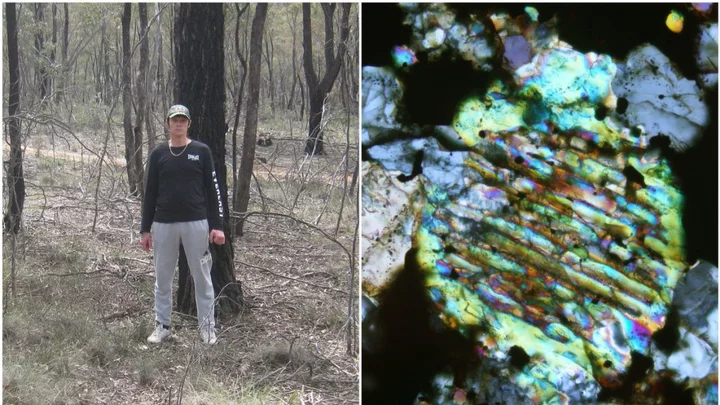
Metal detectorist finds mystery rock that turns out to be worth more than gold
Metal detecting can be a pretty thankless task, with most enthusiasts lucky if they find a couple of quid or an old belt buckle. But for one man in Australia, the experience was out of this world. David Hole was out digging for gold in Maryborough Regional Park, near Melbourne, back in 2015 when his trusty detector alerted him to a strange, red-brown rock embedded in some yellow clay. Hole took the mysterious boulder home with him and did his utmost to crack it open, using a rock saw, a sledgehammer, a drill, and even dousing it in acid, according to Science Alert. And yet, nothing left so much as a dent. Admitting defeat years later, in 2018, Hole took his find to the Melbourne Museum, hoping someone there could explain its impenetrability; convinced it contained a golden nugget. However, the discovery was far more significant than a precious metal: it was a 4.6 billion-year-old glimpse at the birth of our solar system – a rare meteorite that had crashed down to Earth. The museum’s geologists, Dermot Henry and Bill Birch, said they grew excited as soon as Hole pulled the enigmatic rock from his rucksack. Speaking to the Sydney Morning Herald back in 2019, Henry recalled: "It had this sculpted, dimpled look to it. "That's formed when they come through the atmosphere, they are melting on the outside, and the atmosphere sculpts them." Meanwhile, Birch told the paper he knew the specimen was special as soon as he held it. “If you saw a rock on earth like this, and you picked it up, it shouldn’t be that heavy,” he said. Testing soon confirmed their suspicions, as well as the composition of this extraordinary chunk of history. In July 2019, the two colleagues published a scientific paper describing the meteorite, which they christened “Maryborough”, after the area where it was found. The space rock, which measures 38.5cm by 14.5cm by 14.5cm, weighs a staggering 17 kg, and after using a diamond saw to slice through it, the experts discovered that it is what is known as an H5 ordinary chondrite. This means that it contains tiny crystallised droplets (chondrules), that were created by flash heating of dust clouds in the early solar system. "Meteorites provide the cheapest form of space exploration. They transport us back in time, providing clues to the age, formation, and chemistry of our Solar System (including Earth)," Henry said in a statement published by Museums Victoria. "Some provide a glimpse at the deep interior of our planet. In some meteorites, there is 'stardust' even older than our Solar System, which shows us how stars form and evolve to create elements of the periodic table. "Other rare meteorites contain organic molecules such as amino acids; the building blocks of life." The scientist added that the Maryborough Meteorite was most likely formed in the asteroid belt between Mars and Jupiter. Despite all of Henry and Birch’s work, plenty of questions surrounding the rock remain unanswered. They don’t know for sure when it landed on Earth, with carbon 14 testing it was between 100 and 1,000 years ago. Still, multiple meteor sightings were reported in the Maryborough district between 1889 and 1951, so it could have crashed down within this relatively recent time period. Whatever its precise origins, the researchers insist it’s worth more to science than its weight in gold. "This is only the 17th meteorite found in Victoria, whereas there's (sic) been thousands of gold nuggets found," Henry told Channel 10 News at the time. "Looking at the chain of events, it's quite, you might say, astronomical it being discovered at all." Birch echoed this sentiment, adding: “When you consider all the events this chunk of rock has experienced since its formation 4.6 billion years ago, it's really mind-boggling that we get the opportunity to hold it and study it today. How good is that?" Sign up for our free Indy100 weekly newsletter Have your say in our news democracy. Click the upvote icon at the top of the page to help raise this article through the indy100 rankings
2023-11-26 23:24
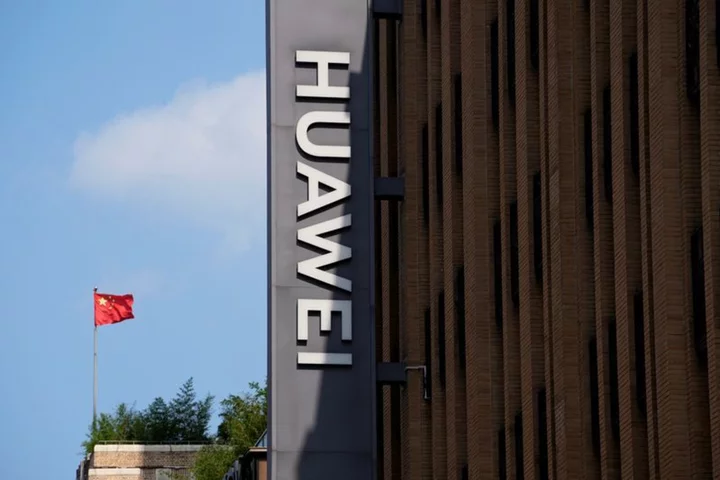
Huawei to move smart car operations to new joint company with Changan
BEIJING (Reuters) -China's Huawei said on Sunday it will move core technologies and resources in its smart car unit, which
2023-11-26 17:54
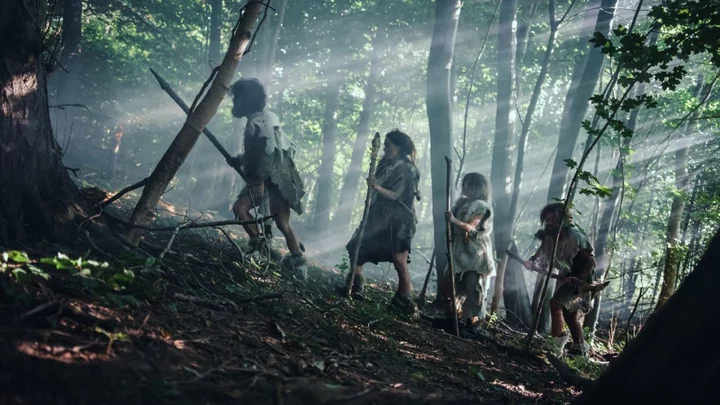
Women may have been better hunters than men, scientists find
Scientists are challenging the way many people think about ancient hunter gatherers, after finding that women may have been better hunters than men. New findings have shown that while there are clear differences between the sexes when it comes to biology, the idea of men being naturally better suited to hunting is a myth. New research from professor Cara Ocobock points to women being metabolically better placed to hunt. Ocobock is an assistant professor in the Department of Anthropology and director of the Human Energetics Laboratory at the University of Notre Dame. She published a study on the subject alongside anthropologist Sarah Lacy at the University of Delaware. The research also points to female hunters dating back to the Holocene period which were uncovered buried with hunting tools – and they’re challenging widely held assumptions over gender roles with the study. Ocobock said in a statement: "This was what everyone was used to seeing. This was the assumption that we've all just had in our minds and that was carried through in our museums of natural history." “Here we review and present emerging physiological evidence that females may be metabolically better suited for endurance activities such as running, which could have profound implications for understanding subsistence capabilities and patterns in the past,” the pair wrote. That’s due to the fact that the presence of the hormones estrogen and adiponectin give women the upper hand when it comes to endurance – a factor which would have been “critical in early hunting because they would have had to run the animals down into exhaustion before actually going in for the kill”. The presence of those hormones is better for modulating fat and glucose. As such, estrogen makes the body use stored fats for energy before turning to carbohydrates. “Since fat contains more calories than carbs do, it’s a longer, slower burn, which means that the same sustained energy can keep you going longer and can delay fatigue,” Ocobock said. “Estrogen is really the unsung hero of life, in my mind. It is so important for cardiovascular and metabolic health, brain development and injury recovery.” “With the typically wider hip structure of the female, they are able to rotate their hips, lengthening their steps. The longer steps you can take, the ‘cheaper’ they are metabolically, and the farther you can get, faster.” “When you look at human physiology this way, you can think of women as the marathon runners versus men as the powerlifters.” Sign up for our free Indy100 weekly newsletter How to join the indy100's free WhatsApp channel Have your say in our news democracy. Click the upvote icon at the top of the page to help raise this article through the indy100 rankings
2023-11-25 21:56

Gulf Air exposed to data breach, 'vital operations not affected'
CAIRO Gulf Air said its data was breached on Friday but its operations and vital systems were not
2023-11-25 21:51
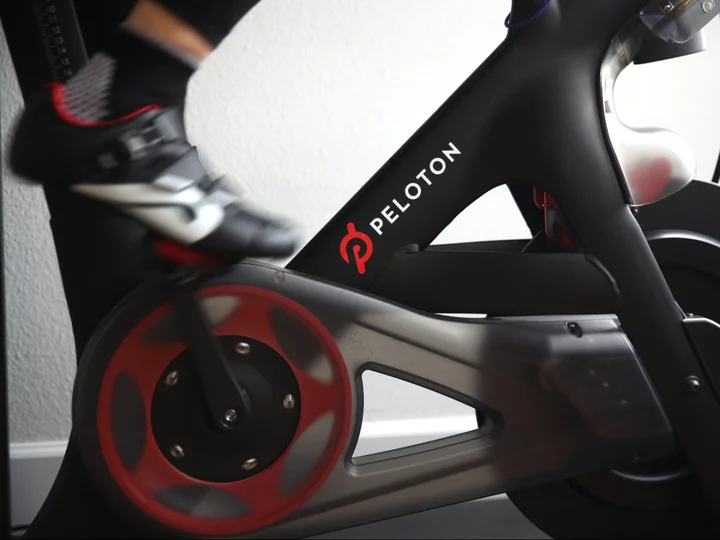
Peloton apologises after issues with Thanksgiving ride: ‘We let you down’
Peloton has apologised to its customers after technical issues kept them from joining its special Thanksgiving ride. The rides had been held to break the Guinness World Records for the largest live streamed cycling and running classes. But they also had the effect of breaking Peloton’s systems, with riders unable to join the “Turkey Burn” class with instructor Robin Arzón for the first 20 minutes. Peloton’s relatively new chief executive, Barry McCarthy, apologised for the experience on the company’s official Facebook page. “We set out to create an amazing annual Turkey Burn Ride experience, and we let you down,” he wrote on the page. The number of riders “overwhelmed our technical infrastructure”, he said. “I know for many of you, this has become an annual tradition, and we owe you the best possible Member experience,” he wrote. “On behalf of the team, we apologise.” Despite the issues, Peloton was able to set the records for the largest live streamed cycling and running class. The company brought in Guinness World Records officials to verify the count, and were given the record for the ”Most viewers of a static cycling lesson live stream on a Bespoke platform”, as well as for running. The cycling class had 27,550 live participants, a spokesperson said. That was lower than the number that had been seen on the leaderboard, though it is not clear whether the discrepancy was the result of the technical problems. Despite the official recognition, the ride and run is not actually Peloton’s biggest live ride: 2021 and 2020 saw more, with the latter seemingly setting the record at more than 50,000 people, according to Peloton news website Pelobuddy. Peloton saw rapid growth through 2020 and 2021, spurred in large part by the move to work out at home during lockdowns. But it has experienced a number of issues since, including recalls of its bikes and seemingly lower interest as people head back to gyms. It has lost around 80 per cent of its share price value since it was listed towards the end of 2019. And its stock has fallen almost 97 per cent since its record highs in late 2020. Read More Nasa has received a signal from 10 million miles away Nvidia sued over ‘stolen’ data revealed in video conferencing mishap AI breakthrough could help us build solar panels out of ‘miracle material’
2023-11-25 17:58
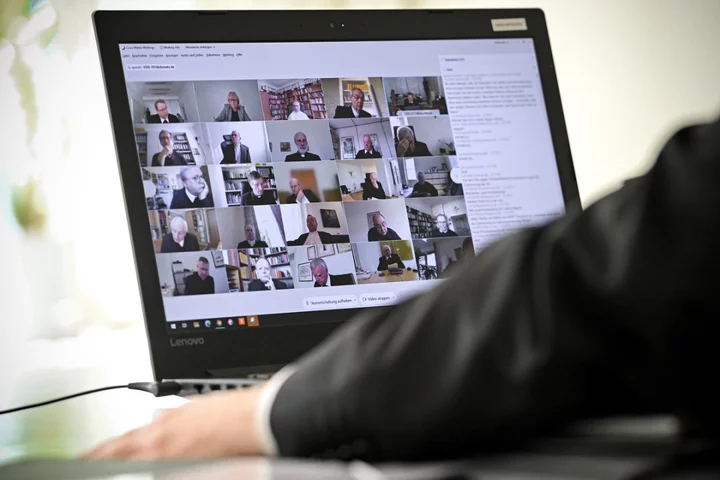
Nvidia sued over ‘stolen’ data revealed in video conference screen-sharing mishap
A new lawsuit filed against Nvidia alleged that a file accidentally left on display by one of its employees during a video conference contains data stolen from the car tech company Valeo. The lawsuit alleged that employee Mohammad Moniruzzaman downloaded the “entirety of Valeo’s advanced parking and driving assistance systems source code” in early 2021 without authorization. It says he also downloaded “scores of Valeo Word documents, PowerPoint presentations, PDF files, and Excel spreadsheets explaining various aspects of the technology” before leaving to join Nvidia in August of that year. Valeo is accusing Nvidia of having benefited from the stolen trade secrets. “Mr Moniruzzaman ended his employment at Valeo and took the stolen source code and technical documentation with him to Nvidia, receiving a promotion to a senior position working on the software development for the very same project,” the lawsuit alleged. The alleged data theft reportedly came to light the following year when staff from both Nvidia and Valeo were working over a Microsoft Teams video conference call on a joint parking assistance project. Nvidia was developing the software, while Valeo was providing ultrasonic sensor hardware in the collaborative project for an unnamed automotive parts manufacturer. “On March 8, 2022, one of these videoconference meetings was scheduled. Mr Moniruzzaman, now employed by Nvidia, attended the video conference call… and shared his computer screen during the call,” the lawsuit noted. “When he minimized the PowerPoint presentation he had been sharing, however, he revealed one of Valeo’s verbatim source code files open on his computer,” it said. Valeo participants on the conference call recognised the source code and took a screenshot of it, the company said. “So brazen was Mr Moniruzzaman’s theft, the file path on his screen still read ‘ValeoDocs,’” the lawsuit noted. Mr Moniruzzaman had admitted to stealing Valeo’s software and using it while employed at Nvidia when he was questioned by German police, according to Valeo’s lawsuit. Nvidia has responded that it has no interest in using the stolen code, according to The Verge. But Valeo alleged that its competitor has benefited from the data, which it says would save “millions of dollars in development costs”. Citing these reasons, Valeo is seeking recovery of damages and an injunction to stop Nvidia and its staff from using its trade secrets. The Independent has reached out to Mr Moniruzzaman through Nvidia for a comment. Read More Trump’s Truth Social sues 20 media outlets over financial loss reports AI breakthrough could help us build solar panels out of ‘miracle material’ ‘We let you down’: Peloton apologises for Thanksgiving ride AI breakthrough could help us build solar panels out of ‘miracle material’ ‘We let you down’: Peloton apologises for Thanksgiving ride HSBC app not working on one of the biggest shopping days of the year
2023-11-25 13:47
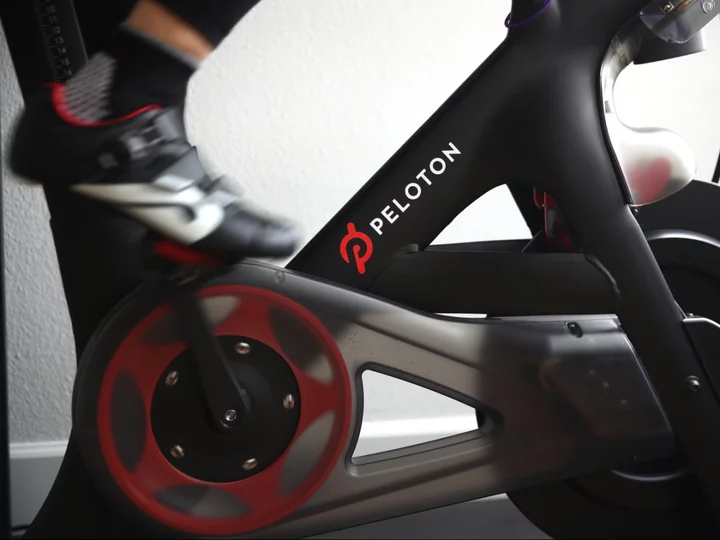
‘We let you down’: Peloton apologises after issues with Thanksgiving ride
Peloton has apologised to its customers after technical issues kept them from joining its special Thanksgiving ride. The rides had been held to break the Guinness World Records for the largest live streamed cycling and running classes. But they also had the effect of breaking Peloton’s systems, with riders unable to join the “Turkey Burn” class with instructor Robin Arzón for the first 20 minutes. Peloton’s relatively new chief executive, Barry McCarthy, apologised for the experience on the company’s official Facebook page. “We set out to create an amazing annual Turkey Burn Ride experience, and we let you down,” he wrote on the page. The number of riders “overwhelmed our technical infrastructure”, he said. “I know for many of you, this has become an annual tradition, and we owe you the best possible Member experience,” he wrote. “On behalf of the team, we apologise.” Despite the issues, Peloton was able to set the records for the largest live streamed cycling and running class. The company brought in Guinness World Records officials to verify the count, and were given the record for the ”Most viewers of a static cycling lesson live stream on a Bespoke platform”, as well as for running. The cycling class had 27,550 live participants, a spokesperson said. That was lower than the number that had been seen on the leaderboard, though it is not clear whether the discrepancy was the result of the technical problems. Despite the official recognition, the ride and run is not actually Peloton’s biggest live ride: 2021 and 2020 saw more, with the latter seemingly setting the record at more than 50,000 people, according to Peloton news website Pelobuddy. Peloton saw rapid growth through 2020 and 2021, spurred in large part by the move to work out at home during lockdowns. But it has experienced a number of issues since, including recalls of its bikes and seemingly lower interest as people head back to gyms. It has lost around 80 per cent of its share price value since it was listed towards the end of 2019. And its stock has fallen almost 97 per cent since its record highs in late 2020. Read More HSBC app not working on one of the biggest shopping days of the year Nasa has received a signal from 10 million miles away Bitcoin mining rate hits all-time high amid record-breaking prediction for 2024
2023-11-25 01:21

AI breakthrough could help us build solar panels out of ‘miracle material’, scientists say
Artificial intelligence is helping engineers build solar panels out of a “miracle material”. Scientists have long been excited about the possibility of new perovskite tandem solar cells, which could help bring the vastly improved efficiency of perovskite to mass production. They have an efficiency of more than 33 per cent, dramatically higher than conventional silicon solar cells. Those tandem solar cells come with a host of other benefits, too. They rely on inexpensive raw materials and can be made relatively easily. Engineers have faced a problem, however, in making them cheaply and at scale. To make them efficient, manufacturers need to make a very thin, high-grade layer of perovskite. Doing that is difficult. It relies on a complex process that varies significantly, seemingly with little explanation. Trying to improve that process has often relied on a gradual process of trying out new possibilities through trial and error. Now scientists have successfully built a new system that uses artificial intelligence to try and work out how to build those layers better. Instead of picking through video recordings to work out how different layers work, researchers were able to train a computer system to spot the hidden signs of good and bad coatings. After the system was built, it was able to be used better understand how to change the production to make it more efficient, researchers said. “These are extremely exciting results,” said Ulrich W Paetzold, a researcher from the Karlsruhe Institute of Technology, who worked on the new study. “Thanks to the combined use of AI, we have a solid clue and know which parameters need to be changed in the first place to improve production. “Now we are able to conduct our experiments in a more targeted way and are no longer forced to look blindfolded for the needle in a haystack. This is a blueprint for follow-up research that also applies to many other aspects of energy research and materials science.” An article describing the breakthrough, ‘Discovering Process Dynamics for Scalable Perovskite Solar Cell Manufacturing with Explainable AI’, is published in Advanced Materials. Read More Tiny solar-powered van unveiled in Japan Solar panel world record smashed with ‘miracle material’ ‘We let you down’: Peloton apologises for Thanksgiving ride
2023-11-25 01:16

Ancient Chinese city found perfectly preserved at the bottom of a lake
Submerged beneath a manmade lake in China lies a forgotten city, dubbed by experts as “China’s Atlantis”. The underwater city, known as the Lion City or Shi Cheng, is hidden 40 metres beneath the surface of Qiandao Lake in eastern China. In 2001, officials discovered – or rediscovered – that the metropolis had been perfectly preserved after years underwater, and by 2017 had opened it up as a diving site for tourists. But what is the history of the Lion City, and how did it end up underwater? Shi Cheng is thought to have been built during the Eastern Han Dynasty between 25AD and 200AD. It was once a political and economic hub in the eastern province of Zhejiang, with a regional seat of power located in the city. The city walls, believed to date back to the 16th century, had five entrance gates, as opposed to the traditional four in old Chinese cities, and its wide streets contain 265 archways featuring stonework of dragons, phoenixes and (you guessed it) lions. However, in 1959, the Chinese government decided to build a hydroelectric power plant in the area and, somewhat shockingly, decided to flood the city to do it. This didn’t just amount to getting rid of a historical artefact. More than 300,000 people needed to be rehoused for the project, which ultimately birthed Qiandao Lake. A surprising side effect to this was that the city remains as a time capsule to the period when it was flooded. Since the water used to submerge it did not contain anything corrosive, and was not conducive to marine life, the remains are in perfect condition. And even though it was still functioning as a city until the mid-20th century, the Lion City has still not been completely mapped out. Now, divers are slowly working through each building, structure, archway, road and house to eventually put together a full picture of what it would have looked like. Until then, it will remain at least party shrouded in mystery, as China’s very own Atlantis. How to join the indy100's free WhatsApp channel Sign up to our free indy100 weekly newsletter Have your say in our news democracy. Click the upvote icon at the top of the page to help raise this article through the indy100 rankings.
2023-11-24 23:51
